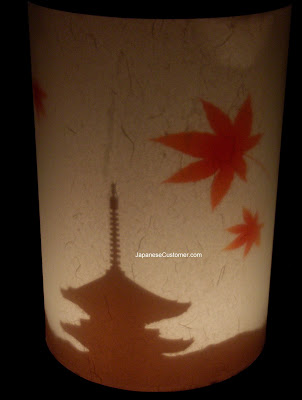Japanese Emojis 🌸
👺 Tengu = Devil or Goblin
👾 Space Invader = Japanese Video game character from the '80s
👘 Kimono = Women's formal dress
📿 Juzu = Buddhist prayer beads
🦀 Kani = Crab
🦐 Ebi = Prawn
🦑 Ika = Squid
🌸 Sakura = Cherry Blossom
🍱 Bento = Lunchbox
🍘 Senbe = Rice crackers
🍙 Onigiri = Rice ball
🍚 Gohan = A bowl of mice
🍛 Karēraisu = Curry Rice
🍜 Ramen = Japanese Noodle Soup
🍣 Sushi = Delicious Japanese food
🍥 Naruto = A fish paste slice used in Ramen soup
🍡 Dango = Japanese sweet
🍵 Ryokucha = Green Tea
🍶 Sake = Japanese Rice wine
🥢 O'hashi = Chopsticks
🎏 Koinobori = Boys Day Fish Banner May 5th each year
🥋 Karate = Japanese Martial Art
🗾 Nihon = Japan
🗻 Fuji-san = Mount Fuji
🏯 Shiro = Castle
⛩ Torii = Gate at the entrance of a Shinto Shrine
♨️ Onsen = Natural Hot Water Bath
🌌 Naruto = Whirlpool in water
🚅 Shinkansen = Japanese Bullet Train
🚥 Shingo = Japanese Traffic Light
🏮 Akachōchin = Most found in front of Izakaya Restaurants
💴 Yen = Japanese Currency
💹 Endaka = A strong Japanese Yen versus the US Dollar Exchange Rate
🎤 Karaoke = Entertainment where people sing songs
🍮 Purin = Custard pudding
🍧 Kakigori = Shaved Ice
🍲 Nabe = Japanese stew
🎍 Kadomatsu = New Years decoration
🎎 Hina Matsuri Dolls = Girls day March 3rd
🗼 Tokyo Tower = Tower in Tokyo
🏣 Yubinkyouku = Post Office
👹 Ogre = Devil from Japanese folklore
💩 Unko = Poo
🙈🙉🙊 Mizaru = No See- Hear -Tell Monkeys
👌 Okane = Money
🐕 Shiba ken = Japanese dog breed
🕸 Spider Chart = Chart widely used in Japan
💮 Hana maru = Great work!
🐡 Fugu = Poisonous fish eaten in Japan
🎋 Tanabata tree = For hanging wishes on
🎐 Furin = Windchime
🏩 Rabuhoteru = Love Hotel
📠 Fakkusu = Fax machine
💱 Tsūka ryōgae = Currenecy Exchange
🔰 Shoshinsha = Learner driver symbol
🥟 Gyoza = Dumpling
🎑 Tsukimi = Moon viewing ceremony
🚑 Kyūkyūsha = Ambulance
🏪 Conbini = 24 Hour convenience store
🎮 Sony Playstation = Video game console
🎴 Hanafuda = Japanese card game
🍺 Jockey = Japanese beer glass
🍤 Tempura = Deep-fried foods
🍢 Oden = Boiled vegetables in soup
📛 Nafuda = Name badge kindergarten
😅 Hazukashii = Shy
😜 Akanbee = Disapproval
😷 Byouki = Unwell
👌 Nomimashouka? = Shall we drink?
🍁 Momiji = Autumn
💢 Kureijī ikatteiru = Crazy anger
🙅 Batsu = No, disagree
🙆 Maru = Good, OK
🙇 Benkyou = Study
⛽️ Gasorinsutando = Petrol station
🚲 Jitensha = Bicycle
🏧 Ateemuu =ATM
📴 Keitai denwa ofu = Turn off your mobile phone
🎌 Shukujitsu = Japanese Public Holiday
👕 Shima Shima = Horizontal striped shirt
🎒 Randoseru = Bag used by kindergarten students
👖 Jīnzu = Jeans
🏇🏻 Keiba = Horseracing
💠 Kawaii = Cute, adorable
In Japanese, Emoji is written as this 絵文字
🌸 Learn the history of Emojis here
#japanesecustomer #japanese #emoji #japan #creativity #innovation #socialmedia #japaneseculture #linkedin #絵文字 #日本のお客様
.jpg)










* Oden (A variety of foods in soup)
Learn more here
https://foodinjapan.org/japan/oden/